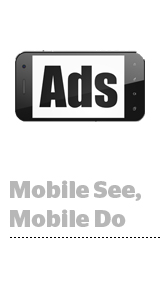 The ad industry is still hashing out how to handle the practical implications around desktop viewability, but ready or not, the Media Rating Council released the near-final draft of its mobile viewability standard for public comment on Friday.
The ad industry is still hashing out how to handle the practical implications around desktop viewability, but ready or not, the Media Rating Council released the near-final draft of its mobile viewability standard for public comment on Friday.
“I wouldn’t say that everybody is ready for this, but there are numerous people clamoring for standards, and organizations are already trading on it,” said George Ivie, CEO and executive director of the MRC. “We did feel a sense of urgency with this.”
It’s been just shy of a year since the interim guidelines on mobile viewability were proposed.
Since then, Moat has become the first vendor to receive accreditation for mobile viewability (both mobile web and in-app), but others, like Integral Ad Science, have also developed solutions.
Now that official standards are on their way to being set, Moat will have to ensure that its offering is in alignment in order to keep its accreditation, as will any of the other vendors. Several vendors are in the midst of the accreditation process.
For simplicity’s sake, the standards call for the same minimum time and pixel thresholds for measuring whether a mobile impression is viewable as were already established for desktop – 50% of pixels in view for one second for display and two seconds for video.
But there are a number of aspects where mobile becomes its own beast entirely.
The interim guidelines, for example, didn’t distinguish between the mobile web and mobile web views. Apps like Facebook and Twitter use web views to load mobile web content within app environments without users having to leave the app.
The revamped standard expands the definition of mobile web ads to include ads served into web views. That’s different from things like banners, interstitials and native ads served directly into in-app environments like news feeds.
The move makes sense from a technology perspective, said Ron Pinelli, VP of digital research and standards at the MRC.
Measuring traditional web browsers and mobile web views is done using the same technology assets (JavaScript tags, for the most part). However, measuring activity within a native app requires different mechanisms, like MRAID, the Interactive Advertising Bureau’s standard for programmatic mobile rich-media creative. MRAID underpins Integral’s in-app viewability solution, for example.
AdExchanger Daily
Get our editors’ roundup delivered to your inbox every weekday.
Daily Roundup
Calling out web views as its own thing also aligns with mobile consumption habits and gives credit where credit is due. Although users are spending an inordinate of time in apps – a report on cross-platform usage released by comScore on Wednesday, for example, found that apps drive 56% of mobile time spent – that doesn’t account for the time users spend engaging with content rendered in web views.
One area the MRC hasn’t figured out how to handle just yet is the news feed, which allow users to move up and down through what is essentially an infinite page of content.
“Because of the way ads pass through a page as users scroll and because the ads aren’t being loaded onto the page on a static basis, the user’s cognition and recognition of ads could be different,” Ivie said.
The council is working directly with a number of publishers that have news feeds to analyze their data and determine whether ads in the news feed should be subject to different time thresholds than other mobile ads. For the moment, there are no special thresholds for the news feed.
Another issue that might be necessary once the mobile viewability guidelines hit is the need for more cross-vendor reconciliation tests, like those the MRC had to run for desktop viewability to handle the discrepancies in counts between vendors looking at the same traffic.
The MRC uncovered a number of technological issues that were causing discrepancies in the desktop space. Polling is one example. Measurement solutions include code that checks, or polls, whether an ad is viewable. Depending on how the code is written, those checks can happen more or less frequently, and if a user abandons or refreshes in the interim, that could open the door to differences in the count between vendors.
Polling is addressed in the draft mobile viewability standards out for comment – the polling minimum threshold is set at 200 milliseconds for mobile display and mobile video – but presumably other unforeseen issues will crop up and need to be dealt with.
“No doubt there will be some friction,” Ivie said. “We’re not babes in the woods from that standpoint.”
But mobile viewability isn’t an end unto itself – it’s a means toward achieving the MRC’s ultimate goal of cross-platform measurement, said Ivie.
“The viewability process is only a step toward an audience-based currency,” he said. “We have an entire agenda at play here around improving digital measurement and we can’t do that until we finalize all this other stuff.”
The council will accept comments through April 30. After sorting through the submissions and tweaking the standards accordingly, the council will send the document back to the mobile viewability working group for review before being finalized, a process the MRC is looking to complete by June.













